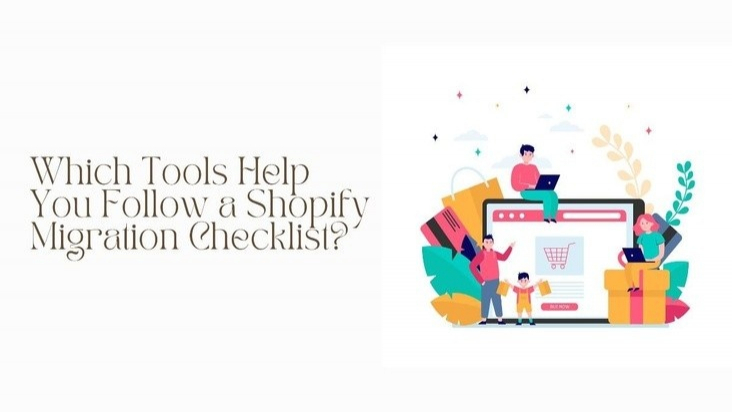Migrating your online store to Shopify can be exciting, but it can also feel overwhelming. Moving products, customer data, orders, and content from one platform to another requires careful planning. Mistakes can lead to lost data, broken links, or even a drop in search rankings.
That’s why a Shopify Migration Checklist is so important. It gives you a clear step-by-step plan for a smooth migration. While the checklist helps you stay organized, using the right tools makes the process much easier, faster, and safer. In this blog, we’ll explore the best tools to follow your Shopify migration checklist and ensure a successful store transfer.
Why Using Tools Is Crucial for Your Shopify Migration Checklist
Manual migration can be risky. Even small errors, like missing a product image or mismatched customer data, can cause big problems. Tools and apps help reduce these risks by automating parts of the process and keeping your data organized.
Using tools ensures that each step of your Shopify Migration Checklist is completed correctly. From exporting data to importing products, handling SEO, and verifying orders, the right tools guide you and save time. They also help maintain the integrity of your store and customer experience.
For example, if you follow the Shopify migration process manually, it could take weeks and still have errors. Tools make the process structured, reliable, and repeatable, which is especially important for larger stores.
Top Tools to Follow Your Shopify Migration Checklist
Here are some of the best tools that can make following your Shopify Migration Checklist much simpler.
1. Shopify’s Native Import Tool
Shopify offers its own import tool for products, customers, and orders. It’s free and officially supported, making it a great starting point for smaller stores.
What it does: Imports CSV files for products, customers, and orders.
Why it’s useful: It fits directly into your Shopify Migration Checklist, especially for data export and import stages.
2. Matrixify (Excelify) App
Matrixify, formerly known as Excelify, is perfect for stores with thousands of products or custom fields. It allows bulk export and import, which can save a lot of time.
Features: Transfers products, customers, orders, collections, and even custom data.
Checklist benefit: Ensures data is accurate and complete during migration, which is a key step in your Shopify Migration Checklist.
3. Cart2Cart
Cart2Cart is a tool that automates migration between platforms like WooCommerce, BigCommerce, or Magento to Shopify.
Advantages: Reduces human error, saves time, and handles large migrations.
Checklist role: Helps follow your Shopify migration process smoothly, especially for moving complex data.
4. Rewind Backups
Backing up your data is essential before migration. Rewind is a backup tool that protects your store data.
What it does: Automatically backs up products, customers, orders, and content.
Checklist benefit: Part of your Shopify migration tips—having a secure backup ensures you can restore your store if anything goes wrong.
5. SEO Manager or URL Redirect Apps
Migrating a store often changes URL structures. SEO manager or redirect apps help preserve your search rankings.
Purpose: Implement 301 redirects from old URLs to new Shopify URLs.
Checklist role: Ensures your SEO is protected during migration, a critical step in any Shopify Migration Checklist.
How to Integrate These Tools into Your Shopify Migration Checklist
Using these tools with your checklist can simplify the migration process: Backup existing data → Use Rewind to ensure you have a secure copy. Export data from your old store → Shopify’s native import tool or Matrixify. Import products, customers, and orders → Cart2Cart or Matrixify. Preserve SEO and URLs → SEO Manager or redirect apps. Test and verify → Check everything works before launching your store. By combining the checklist with these tools, you reduce mistakes and save time. It makes the Shopify migration process predictable and manageable.
Tips for a Smooth Shopify Store Migration
Test small batches first: Don’t import everything at once. Test with a few products to catch errors early. Keep backups: Even after using tools, always keep a secure backup. Monitor after migration: Check for broken links, missing images, and order functionality. Seek expert help if needed: Shopify expert developers can help with complex migrations. Follow the checklist: Step-by-step guidance ensures nothing is missed and the migration is smooth.
Conclusion
Migrating your store to Shopify doesn’t have to be stressful. A clear Shopify Migration Checklist paired with the right tools helps you move data safely, maintain SEO, and launch your store successfully.
Using apps like Matrixify, Cart2Cart, Rewind, and SEO tools ensures accuracy and reduces manual work. Following a structured checklist with these tools allows you to focus on running your business rather than worrying about lost data or broken links.
By carefully planning, using the right tools, and verifying each step, your Shopify migration can be smooth, safe, and stress-free.









